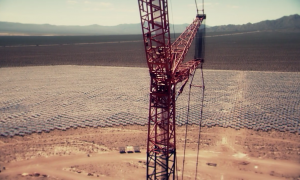A piece of peridotite from Oman, a rock type that naturally absorbs carbon dioxide and mineralizes it, literally turning it into solid carbonate, similar to limestone or marble. The white lines in the rock are calcium carbonate formed by the mineralization process. Peter Kelemen, a geochemistry professor at Columbia’s Lamont-Doherty Earth Observatory in Palisades, New York, is studying how such rock formations could be used to store carbon for thousands of years, to help fight climate change. (Photo: Elizabeth Weise)
Tech-Science |
USA Today
March 4, 2019
PALISADES, NEW YORK — Peter Kelemen spends time in Oman looking for ways to pull carbon out of the air and put it back underground. His colleague, David Goldberg, looks at ways to store it far below the sea floor off the Oregon coast. Chemical engineer Alissa Park is working with steel mills in China to turn slag and waste carbon dioxide into reusable material.
Source Post Date:
February 28, 2019




















0 Comments